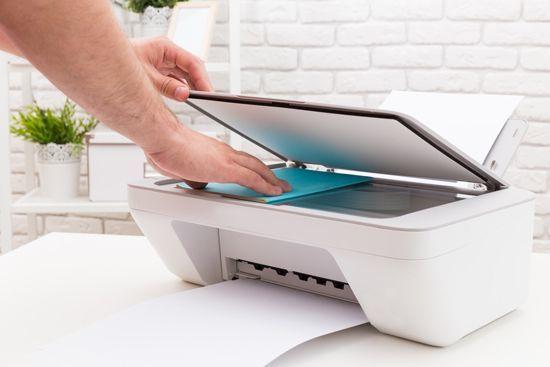
Nowadays, it’s very hard to get by without a scanner at your disposal at home or in the office.
And although scanners may seem like simple devices, they’re not all the same. لعب الروليت You can buy the one you think is the best, but it might still not be the one you actually need.
This is exactly the reason why I decided on writing this buying guide. I’m going to tell you all the details and criteria you should keep in mind when it’s time to make a decision.
Understanding the Types of Scanners
The 3 most popular types are Flatbed scanners, Sheet-fed scanners, and portable scanners.
While there are other types like photo scanners, film and slide scanners, multifunctional (all-in-one) scanners, and specialty scanners, I’ll only be going through the 3 main types.
Flatbed Scanners
Best-suited for: Home scanning and photographers
Read more: Best Flatbed Scanners 2019
This one is the most common type and what usually comes to mind when speaking of scanners.
It gets its name from the glass flatbed that you lay your documents on to scan.
It’s good for scanning both photographs and documents alike, so if you’re looking for the most versatility out of your scanner, they’re the ideal choice.
On top of that, they usually have the highest resolutions and the most all-round features.
However, they have the largest footprints due to their fixed flatbed.
Flatbed scanners can only work with one document at a time as the documents have to be inserted onto the flatbed. So steer away from these if you’re going to be high-volume scanning.
Sheet-Fed Scanners
Best-suited for: High-volume, bulk and office scanning
Sheet-fed scanners are the best option for offices where a lot of scanning will happen.
As the name implies, they work by feeding sheets into the scanner. The same mechanism found on printers or copier sheet feeders. مواقع تربح منها المال
Unlike flatbeds, sheet-fed scanners can perform continuous scanning, which makes them suitable for bulk archiving –typical of offices.
Moreover, these scanners come with higher scanner speeds and duplex scanning capabilities which can save a lot of time and money that would otherwise be spent on consumables.
Portable Scanners
Best-suited for: On-the-go scanning and people who travel
Portable scanners are fit for exactly what their name implies: mobile and on-the-go scanning.
They’re usually very compact and lightweight.
However, to keep that small footprint, they compromise some of the speed and resolution.
Recent models come with both USB and battery-powered options as well as many connectivity options.
Understanding the Features
Once you’ve set your mind on the type of scanner that suits your needs, it’s time to give the features some thought.
Scanning Size
What document size are you going to be scanning the most? Flatbed scanners are usually capable of working with A4 or Letter size documents. Some can scan up to A3 size.
Resolution
The resolution of a scanner is measured in PPI (Pixels per Inch).
A higher resolution means more details to be captured from the original image. It also means your file size will be bigger.
If you’re going to scan text, a 200 PPI scanner will do the job while a 300 PPI one is good enough for pictures.
If you want to enlarge your photos, however, you should go for a scanner with higher resolutions such as a 600 PPI one.
Sometimes, you’ll find the word “interpolated” on the list of features of the scanner.
This means that the resolution is enhanced digitally with the help of a software technology called interpolation.
This technology creates extra pixels to enlarge the image based on calculations associated with the surrounding pixels.
However, the more the interpolation that’s in play, the lower the resolution of the final result.
Compatibility
Make sure that the scanner you get is compatible with your operating system.
Most of the time, you’ll easily find a scanner that’s compatible with PC or Mac. العاب الروليت However, finding one that’s compatible with Linux or Chromebook can be a little more difficult.
On top of that, some scanners may only offer basic features in the Mac-compatible models.
Connectivity and Software
It’s important to check out the connectivity options on your scanner. Some software or services can cost even more than the scanner itself.
In terms of software, Fujitsu is pretty good in this aspect, however, its devices can be a little expensive.
Without a doubt, Epson does a good job of combining quality and affordability. The more recent Canon models also offer great software.
A very interesting software is Evernote which allows you to export digital documents directly on the Cloud.
A PDF editor is also quite essential as well as some editing functions to adjust brightness, contrast, and remove noise. روليت
Finally, an OCR (optical character recognition) software is a great way to convert your scanned text into Word or Excel files as well as PDFs that you can search in or edit.
Capacity
A flatbed ADF can scan around 10 or 20 pages.
However, portable models can go as low as single-sheet scanning and may need to be hand-fed each individual page. ويليام هيل
Desktop scanners, on the other hand, can handle 50 sheets or more at a time.
Scanning Speed
Scanning speed is measured in PPM (pages per minute. However, this may include the double-sided option or only the single-side pages –so make sure to check the manufacturer’s information.
The speed will depend on the resolution you choose, the paper size, and whether the scans are in black, greyscale, or in color.
Duplex Scanning
Duplex scanning is mostly exclusive to desktop scanners as they are capable of executing double-sided scans in a single pass.
It’s an excellent way to save time as well as paper.
Although you can find it on flatbed scanners, it requires manual intervention as you have to turn the paper yourself.
This doesn’t necessarily save time, but it does save paper and that’s good enough.